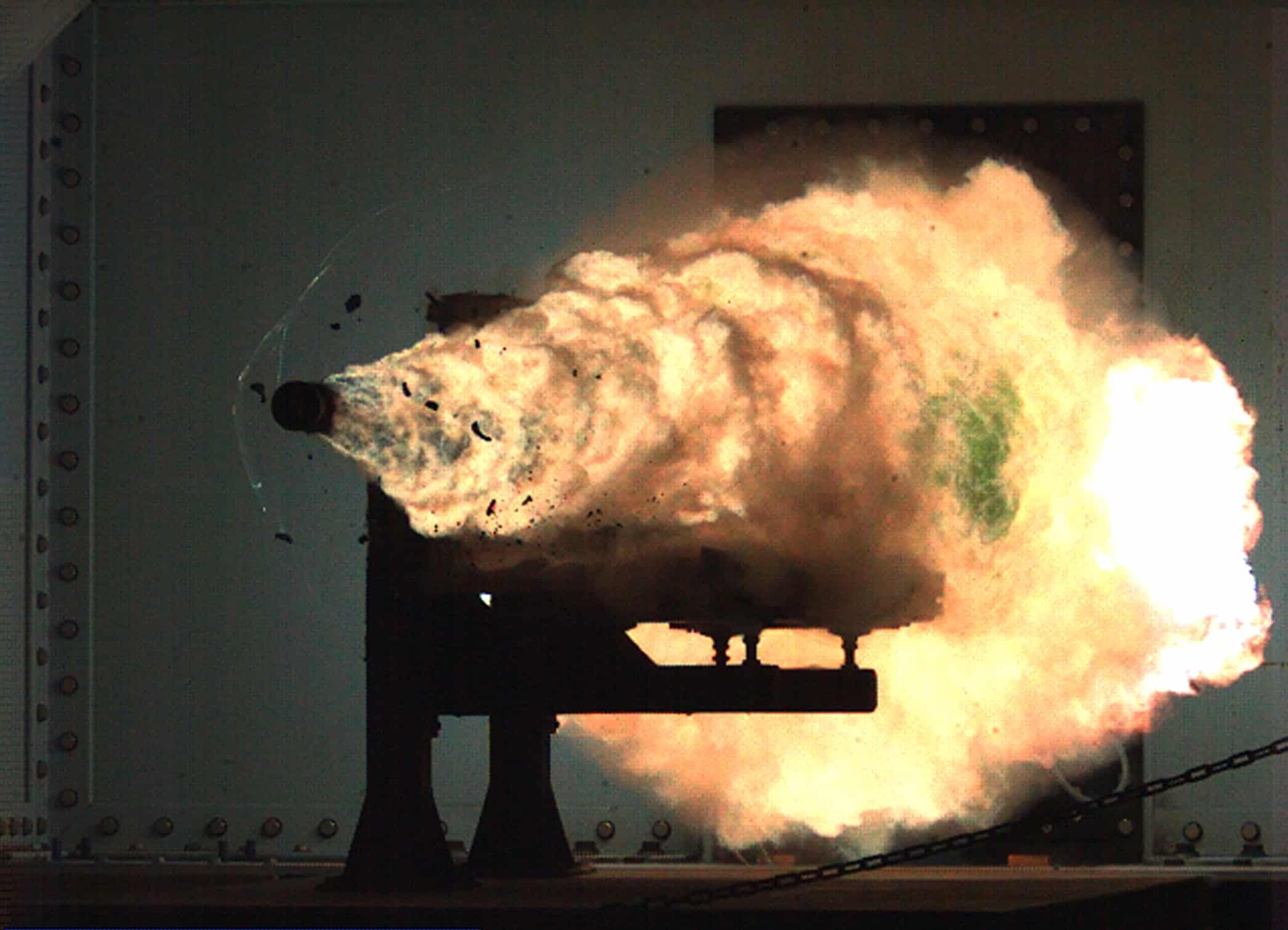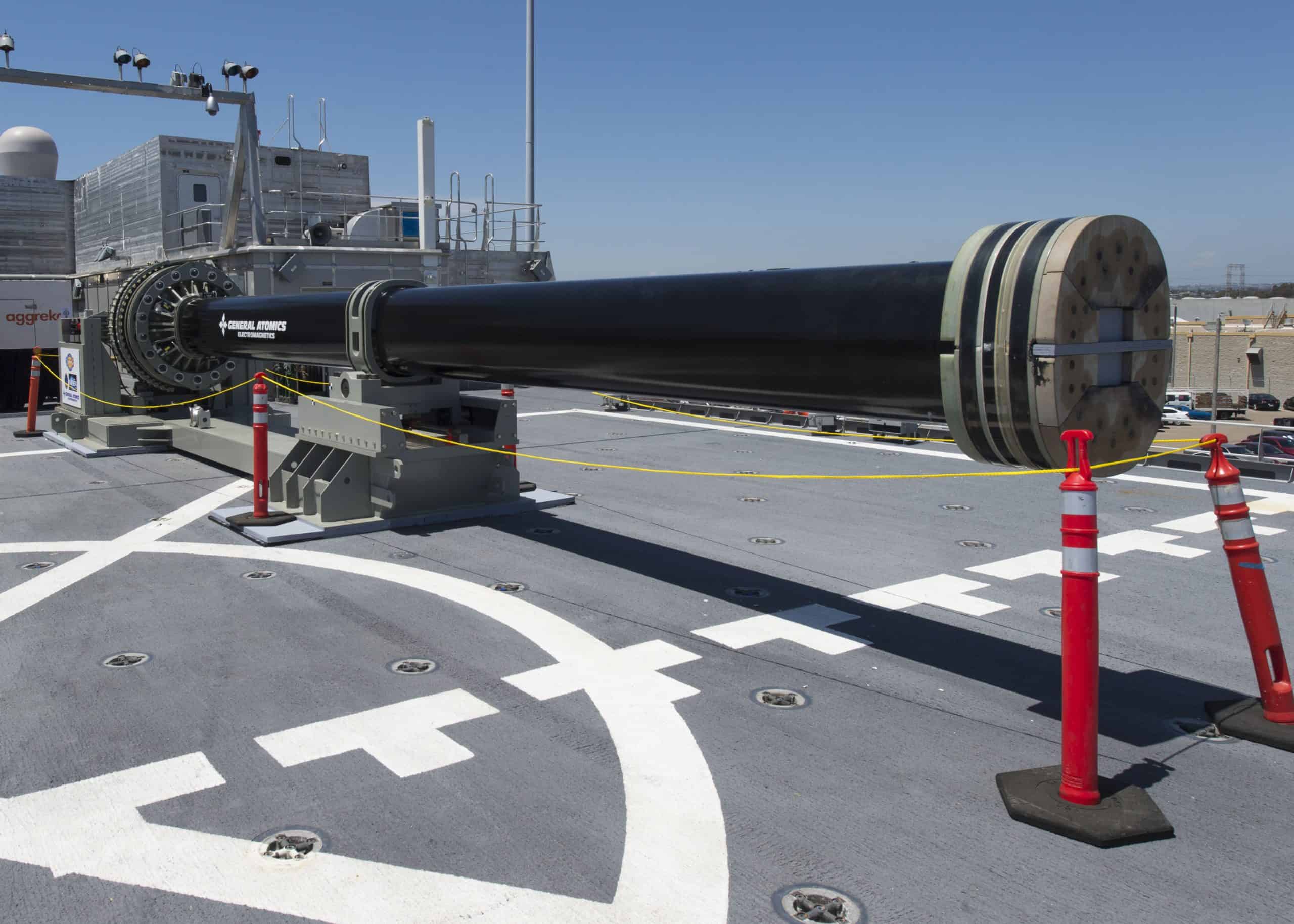Military
$500 million and 15 Years Later, Why Did the Navy Cancel This Supersonic Cannon?

Published:

Electromagnetic railguns are a futuristic application of technologies that have been around for a long time. Basically: “let’s use electricity to throw something really far and really fast.” It’s how far, and how fast that makes this technology seem like science fiction come to life. Read on and we’ll explain, as well why the U.S. Navy has given up on the project, but another country may revive it. If you’re a tech investor, this is something you might want to keep an eye on.
24/7 Wall St. Insights

A railgun is powered by electricity flowing between two rails that act as parallel conductors. This accelerates a sliding armature to propel a non-explosive metal slug at supersonic speeds—think Mach 8.8 (6,752 mph). Even though the projectile is just an inert piece of metal, at that speed it impacts so powerfully that its kinetic energy creates a devastating explosion, larger than conventionally-launched explosives of the same mass.

The most obvious application for this technology is as a weapon. The Navy was particularly interested railguns because their non-explosive projectiles are safer to store on ships; they run on electricity that is readily available from nuclear reactors on large naval ships; and they have greater range and explosive power than existing naval guns.

Researchers have theorized that railguns could be used to assist rocket launches. Firing payloads into orbit with a large railgun could lower the cost per pound by 90%. However, the g-forces would be so extreme, that this tech would likely be used only for launching highly durable cargo like food, water, building materials, or fuel.

The United States Ballistic Research Laboratory began to study and test railguns in 1980. This has been an international effort, built upon earlier Australian research and conducted in cooperation with the United Kingdom starting in 1993. By 2010, the U.S. Navy had developed a compact railgun that could be placed on ships. The Latin motto of the project, “Velocitas Eradico” means “Speed Kills.” The U.S. Army was at the same time researching its own land-based variant of the railgun.

The main problem with railgun technology is that material science is not yet advanced enough to create components that will not bend or melt under the extreme friction, heat, and pressure that happens every time the gun is fired. This also creates a danger to military personnel near the gun when it is fired, and a heat signature that enemies can detect and use to target the ship. For these reasons and more, both the Army and Navy stopped funding the project in 2021; in the Navy’s case, after having spent 15 years and some $500 million on the railgun research.

The Japanese Ministry of Defense has indicated interest in partnering with U.S. defense contractors to help bring its own railgun research to fruition. Japan Steel Works is the main contractor working on that project. The Ministry of Defense has encouraged the company to explore bringing the main U.S. railgun contractors, BAE Systems and General Atomics, on board. One reason the Japanese are interested in this technology is as a possible defense against hypersonic missiles fielded by China and Russia.
So it seems we keep finding more uses for a working railgun, yet no one has yet been able to produce a commercially viable one. The company or companies that do will find a ready market around the world.
Retirement can be daunting, but it doesn’t need to be.
Imagine having an expert in your corner to help you with your financial goals. Someone to help you determine if you’re ahead, behind, or right on track. With SmartAsset, that’s not just a dream—it’s reality. This free tool connects you with pre-screened financial advisors who work in your best interests. It’s quick, it’s easy, so take the leap today and start planning smarter!
Don’t waste another minute; get started right here and help your retirement dreams become a retirement reality.
Thank you for reading! Have some feedback for us?
Contact the 24/7 Wall St. editorial team.